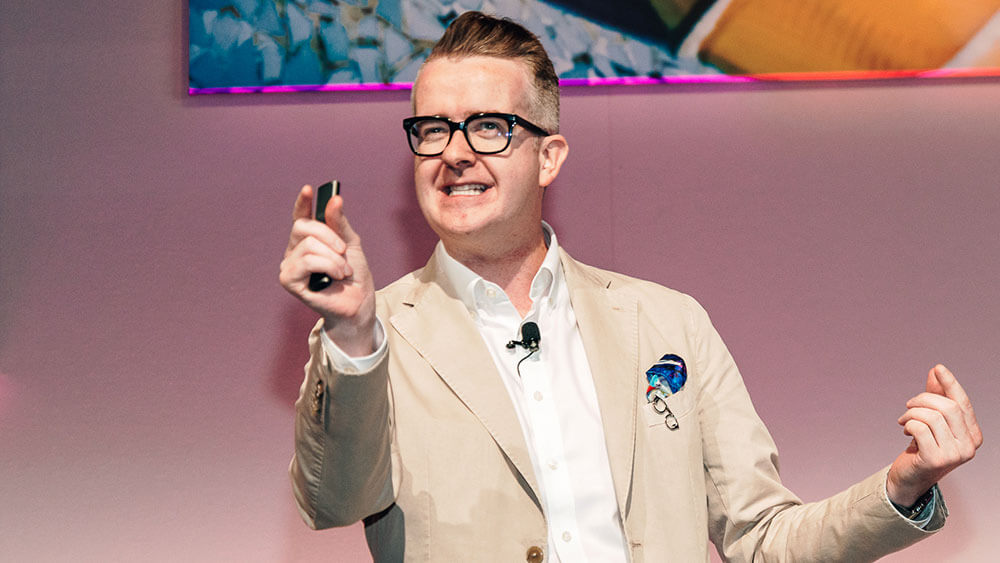
Business expert and BBC mentalist David Meade delivers a keynote presentation at the 2019 PCMA European Influencers Summit in Barcelona. (Marta Fernandez/PCMA)
Perhaps you want to get your board of directors, well, onboard with the idea of shortening your annual conference by one day. Maybe you need to get your biggest sponsor to support a new initiative in a different part of the world. No matter what you’re trying to do, moving the decision-making process from the “we’re still thinking about it” phase to a concrete “yes” can take a long time. David Meade, an international business strategist who has worked with the likes of Apple, PwC, and Bank of America, believes any delay can be very costly.
 “Decisions are the oxygen of great teams, individuals, and organizations,” Meade told the audience at PCMA’s European Influencers Summit in Barcelona in September. “If we’re not making and taking them all the time, we’re already starting to slow down. And decision-making, in our teams, is the one thing that slows down quickest in times of great change. That’s what leads to the cc: [email] mentality where one of your team takes a tiny little decision and cc’s everyone in the Western hemisphere.”
“Decisions are the oxygen of great teams, individuals, and organizations,” Meade told the audience at PCMA’s European Influencers Summit in Barcelona in September. “If we’re not making and taking them all the time, we’re already starting to slow down. And decision-making, in our teams, is the one thing that slows down quickest in times of great change. That’s what leads to the cc: [email] mentality where one of your team takes a tiny little decision and cc’s everyone in the Western hemisphere.”
How can you break the cycle of inviting an overwhelming number of people to be part of the decision-making process? It starts with knowing what decision you want someone to make. “When you’re talking to your team or even to a supplier, you must never present one option because, psychologically, we want to disagree with that,” Meade said. “You must always produce a selection, a buffet.”
The ideas on that buffet need to be strategically arranged with your preferred decision presented in the third position. Meade pointed out that “the whole world is divided into threes” with common trifectas such as “good, better, best; first, second, third; Father, Son, Holy Ghost; and gold, silver, bronze.”
“We are divided into threes because it allows us to rank things,” he said. “And we can only hold three pieces of information in our minds at one time. The minute that a fourth one is introduced, it’s information overload, and we gravitate back toward three.”
In addition to the right placement, you need to tell the right story. To do that, you can take a cue from the breaking news notifications you receive on a regular basis. “As human beings, we love bad news,” Meade said. “It’s 700 percent more likely to be retained and acted upon.”
However, he isn’t recommending a doomsday approach. Instead, he believes it’s valuable to highlight the positive things that will not happen if the wrong decision is made. Rather than talk about the potential pitfalls of making a decision, he believes it’s more valuable to spell out the potential benefits while driving home the point that those benefits will not come to life without committing to the change in behavior. For example, if you don’t alter the dates of your program, you might not see that projected increase in attendance. If the sponsor doesn’t decide to invest in that new program, their brand will not cement its footprint in a new destination. Those warnings will catch the ears of your decision-makers. “Bad news,” Meade said, “is delicious.”
Meade will speak at Convening Leaders 2020 in San Francisco in January. Browse the full Convening Leaders schedule and register for this year’s program.
David McMillin is an associate editor at Convene.

